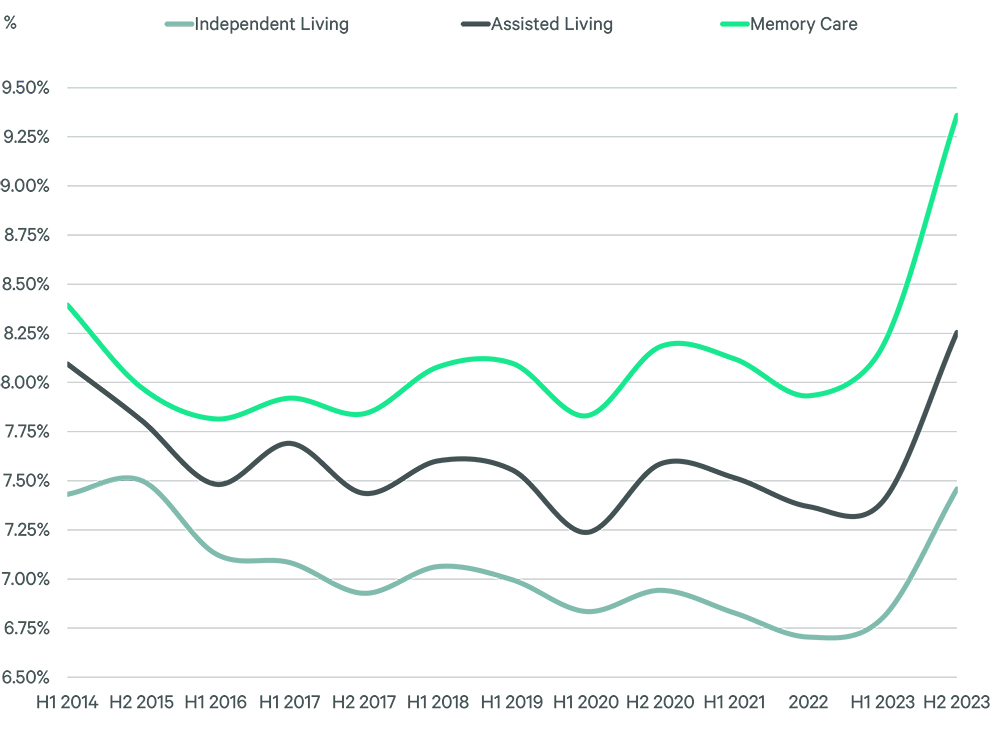After years of moderate fluctuation, seniors housing capitalization rates have curved sharply upward in the last year, investors within the industry say.
That’s according to CBRE’s most recent edition of its U.S. Senior Housing & Care Investor Survey. This 13th edition of CBRE’s survey, conducted in October 2023, polled the same group of seniors housing real estate professionals and investors as its last survey in April and had a 98 percent response rate. While the April survey focused largely on changing market conditions caused by inflation and staffing shortages, the October survey focused more on debt liquidity and rising interest rates.
Respondents reported that skilled nursing capitalization rates increased by 71 basis points (bps) between April and October, after falling by 34 bps between CBRE’s previous two surveys.
The average cap rate for active adult communities increased by 68 bps between April and October.
Cap rates for independent living, assisted living and memory care facilities increased by 73 bps on average over the past six months.
Seventy-five percent of survey respondents reported cap rate increases of 50, 75 or 100 bps across all seniors housing categories. Thirty-one percent reported increases of 100 bps or more.
Although the report does not tackle the “why” of the cap rate increases, the recent run-up in interest rates has led to some distress in the industry as owners are unable to get the favorable loan terms of recent years. This has, in turn, led to discounted prices on seniors housing properties for sale.
Respondents expect that rent increases will continue for the next few months, even if slower than the double-digit increases many owners pushed during the pandemic to deal with rapidly rising expenses. For active adult, independent living, assisted living and memory care facilities, 66 percent of survey respondents said they expect rental rate increases of 3 to 7 percent over the next 12 months.
The percentage of respondents who reported underwriting rent growth above 7 percent fell to 15.6 percent in the October survey from 21.5 percent in the April survey.
To read the full report, click here.

